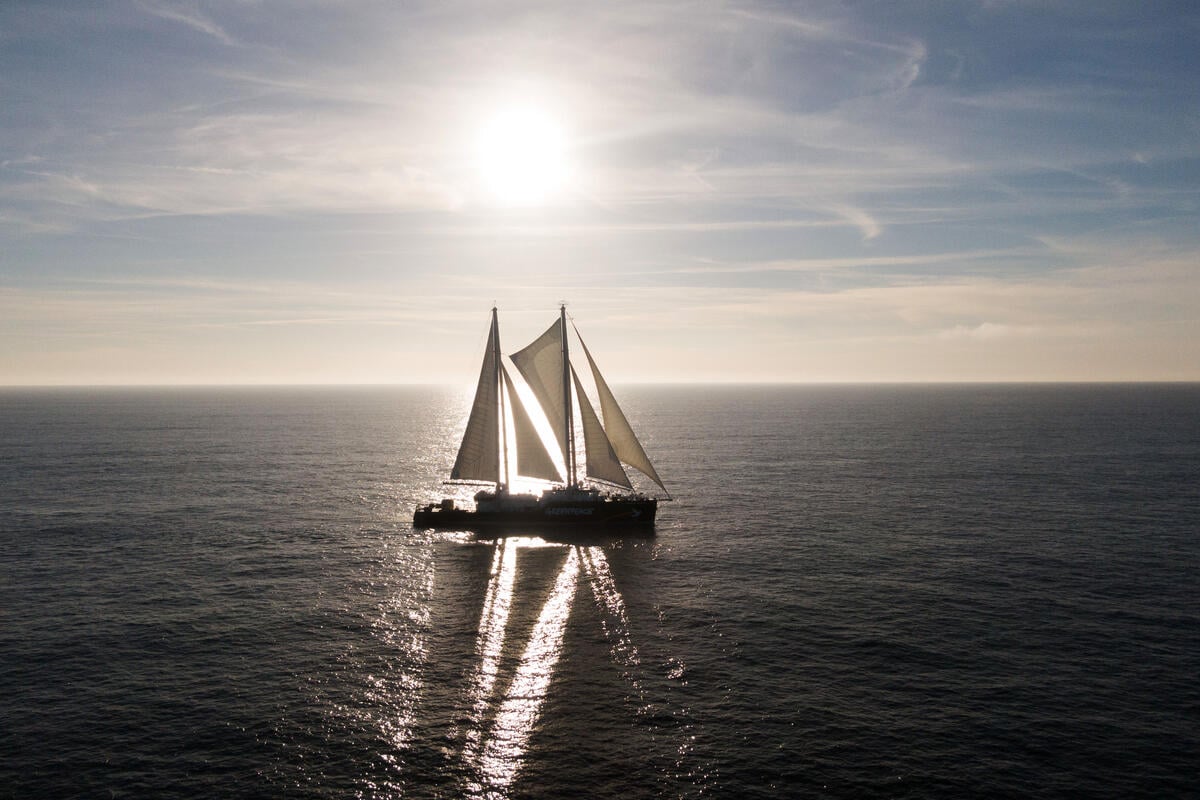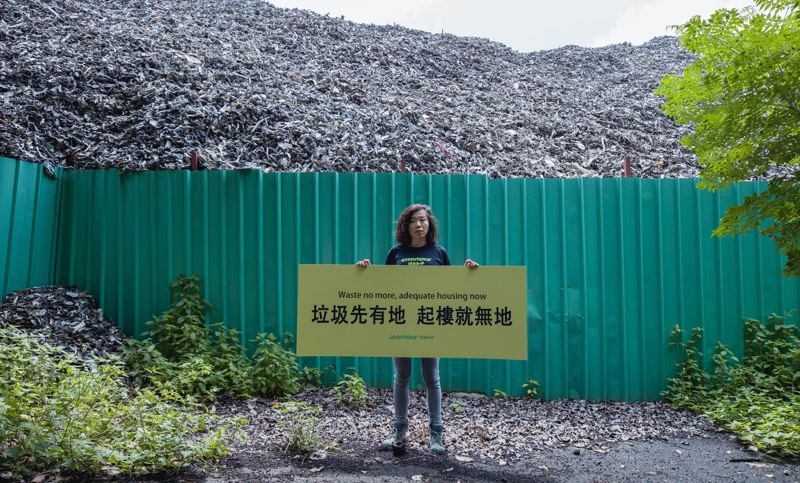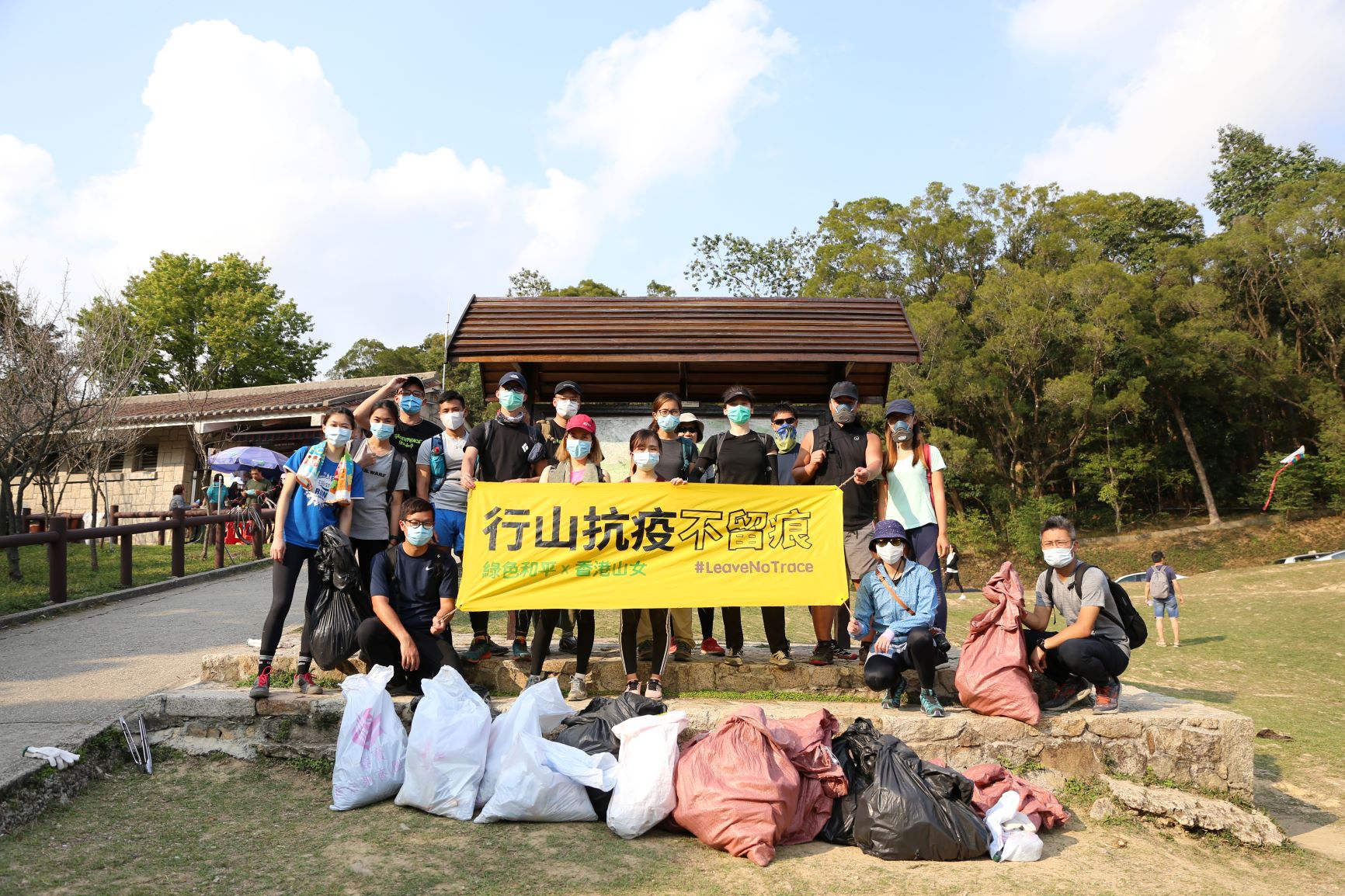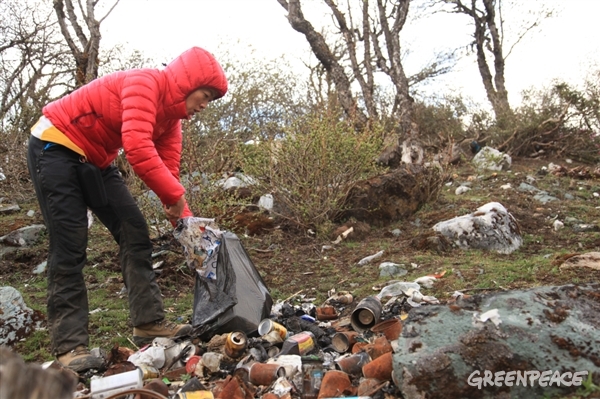
Zhong Yu helps to pick up litter on the way up the Haba Snow Mountain
Then and Now
Sixteen years ago, our team member Zhong Yu was the first woman to reach the peak of the Haba Snow Mountain (see here). She noted how the mountain hasn’t changed – a presence truly eternal. But at the foot of the mountain, Haba Village has developed fast. The roads were wider, the buildings taller, and the numbers of visiting adventurers far more than sixteen years before, when they could be counted on one’s fingers. She also noted how every visitor’s equipment is now so new and advanced. Sixteen years ago, thick jumpers, waterproofs and a sturdy rucksack were the kit of choice. Now the number of brands, types of equipment and range of accessories is mind boggling.
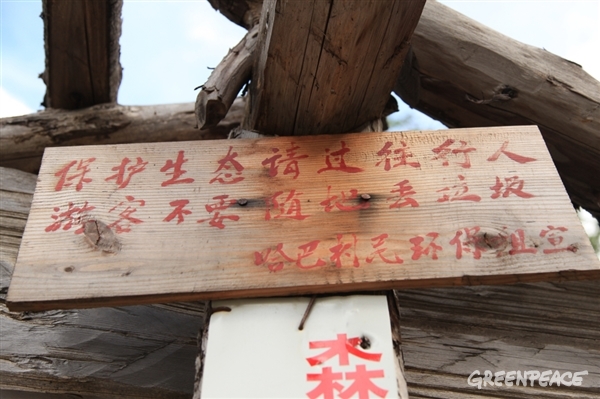
A sign installed by local villagers. It reads: ‘In order to preserve the environment, please don’t litter – Haba Villagers Environmental Protection Team’
Locals Take the Lead on Litter
At approximately 3200m, we took our first rest in the cool mountain air. Haosi told us that locals had placed bamboo crates along the pathway for trekkers to put their rubbish in. A household at base camp collects the contents of these crates periodically and burns the rubbish. This helps get rid of the physical presence of the rubbish, but the toxic gases and unclean ash which are produced by the fire leave behind a little noticed human stain on this idyllic landscape, including, perhaps, in the frozen water high above the snowline. Though well intentioned, this is not the best way to deal with the litter problem at Haba Snow Mountain.
Besides, despite the villagers’ efforts to clean up the rubbish left behind by hikers and mountaineers, we noticed plastic bottles, food wrappers and other rubbish alongside the path up the mountain. As nature lovers, hikers should, in particular, be environmentally conscious and pick up theirs and other’s rubbish along the way. We did our best to act as role models.
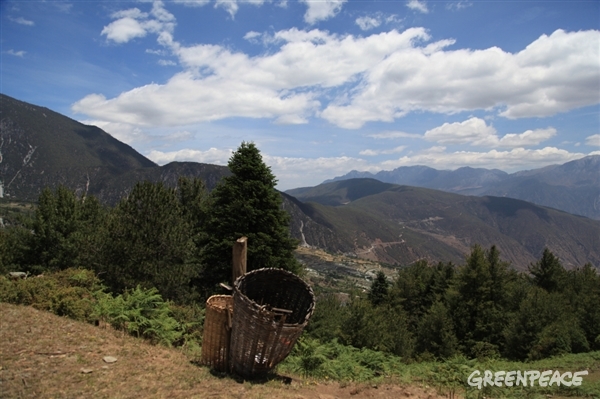
A bamboo litter basket installed by the local Environmental Protection Team
The Environmental Protection Team
In October 2010, fourteen villagers from Haba Village self-organized an “environmental protection team”. Every five days, two villagers will be designated to climb the mountain and pick up rubbish. On their descent, they would take the garbage to a waste disposal station at Tiger Leaping Gorge.
The environmental protection team charge each climber of the Haba Snow Mountain 200 yuan as an “Eco Fee”, with all proceeds going to the Haba Snow Mountain Environmental Protection Program.
Local trekking guid Haosi talks about the Haba Village Volunteer Waste Collection Group
Their commitment and efforts to clean up their local environment are inspiring. But wouldn’t it be better if they did not have to clean up after us? Wouldn’t it be better if we acted responsibly and cleaned up after ourselves, leaving the pristine environment untouched? Leave no trace should be the motto of every outdoor enthusiast.
As our mission would discover, the rubbish which taints the purity of these Shangri-La mountains is not just bottles, wrappers, jars and other visible items. Our equipment and clothing also leaves its trace. This will be the bigger challenge for the outdoor community to deal with. For now we can start with what is both easy and effective – disposing of one’s rubbish responsibly!

